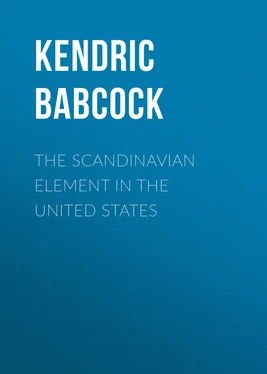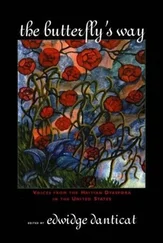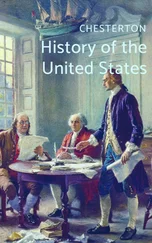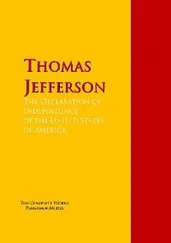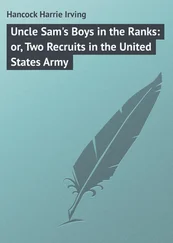Kendric Babcock - The Scandinavian Element in the United States
Здесь есть возможность читать онлайн «Kendric Babcock - The Scandinavian Element in the United States» — ознакомительный отрывок электронной книги совершенно бесплатно, а после прочтения отрывка купить полную версию. В некоторых случаях можно слушать аудио, скачать через торрент в формате fb2 и присутствует краткое содержание. Жанр: foreign_antique, foreign_prose, на английском языке. Описание произведения, (предисловие) а так же отзывы посетителей доступны на портале библиотеки ЛибКат.
- Название:The Scandinavian Element in the United States
- Автор:
- Жанр:
- Год:неизвестен
- ISBN:нет данных
- Рейтинг книги:5 / 5. Голосов: 1
-
Избранное:Добавить в избранное
- Отзывы:
-
Ваша оценка:
- 100
- 1
- 2
- 3
- 4
- 5
The Scandinavian Element in the United States: краткое содержание, описание и аннотация
Предлагаем к чтению аннотацию, описание, краткое содержание или предисловие (зависит от того, что написал сам автор книги «The Scandinavian Element in the United States»). Если вы не нашли необходимую информацию о книге — напишите в комментариях, мы постараемся отыскать её.
The Scandinavian Element in the United States — читать онлайн ознакомительный отрывок
Ниже представлен текст книги, разбитый по страницам. Система сохранения места последней прочитанной страницы, позволяет с удобством читать онлайн бесплатно книгу «The Scandinavian Element in the United States», без необходимости каждый раз заново искать на чём Вы остановились. Поставьте закладку, и сможете в любой момент перейти на страницу, на которой закончили чтение.
Интервал:
Закладка:
As dissenters from the established church, these Quakers were continually subject to actual or threatened pains and penalties, in addition to those troubles which might arise from their refusal to take oaths and to render military service. Their children and those of other dissenters must he baptised and confirmed in the Lutheran Church; they must themselves attend its services and pay taxes for its support, or suffer fines or other punishment for failing so to do. Tho prosecutions, or persecutions, were really few before 1830, an episode now and then showed the dissenters what might be in store for them if they persisted, as when one of the Quakers was arrested in 1821 for burying his children in unconsecrated ground, and fined five specie dollars a day until he re-bury them in consecrated ground, and agree to follow the outward ceremonies and customs of the state church. 25 25 Richardson, Rise and Progress of the Society of Friends in Norway , 37.
Two years before one of the Friends wrote: “There are no laws yet made in favor of Friends, so that those who stand firm in their principles act contrary to the laws of the country. Friends must be resigned to take the consequences.” 26 26 Ibid. , 23.
With signs of persecution, with an increase of discontent, and with the leadership of a man possessed of first-hand knowledge about the United States, it is not surprising that emigration was decided upon.
Kleng Peerson, called also Kleng Pederson and Person Hesthammer, was a man of dubious character, who has been variously described. One has called him the “Father of the Newer Norwegian Immigration” and as such entitled to a chapter by himself; another has written him down as a tramp. 27 27 R. B. Anderson, “En Liden Indledning” in the series of articles “Bidrag til vore Settlementers og Menigheders Historie,” Amerika , April 4, 1894. Bothne, Kort Udsigt over det Lutherske Kirkearbeide bladnt Normændene i Amerika , 822.
A softer characterization, however, makes of him a “Viking who was born some centuries after the Viking period.” 28 28 O. N. Nelson, “Bemerkning til Prof. Andersons Indledning”, Amerika , May 2, 1894.
He appears to have been a sort of Quaker, either from conscience or convenience. His leaving his home parish of Skjold near Stavanger, and his emigration to the United States in 1821 in company with another Norwegian, are attributed to motives ranging from a commission from the Quakers to find a refuge for them in America, to a desire to escape the rich old widow whom he married, and who was tired of supporting him in idleness. 29 29 Nelson, History of the Scandinavians , I, 134 B-C.
Certain it is that upon his return to Norway in 1824, after three years of experience in the New World, the sentiment favoring emigration from Stavanger soon crystallized.
By midsummer of 1825 a company of fifty-two persons, mostly Quakers from the parish of Skjold, was ready to journey to America. They purchased a sloop and a small cargo of iron which would serve as ballast and which might bring them profit in New York, tho this was probably a secondary matter. 30 30 Langeland, Nordmændene i Amerika , 11.
On the 4th of July, 1825, they set sail from Stavanger, and after a somewhat circuitous voyage of fourteen weeks, which was not very long, as such voyages went, they made their landing in New York, October 9th, numbering fifty-three instead of fifty-two, for a daughter was born to Lars Larson on shipboard. 31 31 C. A. Thingvold gives a list of the names of the “Sloop Folk,” save four, which he obtained from one of the survivors, in “The First Norwegian Immigration to America,” The North , Aug. 10, 1892.
This landing of the “Sloop Folk” of the “Restoration,” whose story is a favorite and oft-told one with the older Norwegian immigrants, is occasionally likened to the Landing of the Pilgrim Fathers who fled to a wilderness to escape persecution and to seek social and religious freedom; but on close examination the comparison breaks down at almost every point, – motive, objective, method and result. 32 32 J. B. Wist, Den Norske Invandring til 1850 , published about 1890, ventures to question seriously whether such a company ever came to the United States! His reason is that the clearance records of Stavanger show no such name as the “Restauration,” and American statistics give the total Scandinavian immigration as 35, of whom 14 are credited to Norway.
In New York the captain and mate of the “Restoration” were arrested for having more passengers than the Federal law allowed – two passengers to each five tons of the vessel. Having an excess of twenty, the sloop was legally forfeited to the United States. 33 33 Statutes of the United States, 1819 , Act of March 2.
However, for some unknown reason, the offenders were released and allowed to dispose of their cargo. The original cost of ship and cargo appears to have been about $1950, but both were sold for $400. This inadequate sum was supplemented by the generosity of the Quakers of New York, whose contributions and assistance enabled the “Sloop Folk” to proceed inland to Western New York.
They took up land in Kendall and Orleans County on the shores of Lake Ontario, about thirty-five miles northeast of the new town of Rochester in which two of the families decided to remain. The price of the land was $5 per acre, and each man was to take about 40 acres; but as they were without cash, they agreed to pay for their farms in ten annual instalments. The reasons for selecting this region are not difficult to surmise, tho there is no direct proof of the motive. The country around Rochester was, in 1825, in the midst of a sort of Western “boom”; the Erie Canal was just finished, and the prospects of Rochester were very promising. 34 34 “Rochester is celebrated all over the Union as presenting one of the most striking instances of rapid increase in size and population, of which the country affords an example.” Capt. Basil Hall, Travels in North America , I, 153.
Its population grew quite marvelously; in September, 1822, it was 2700; in February, 1825, 4274; and in December of the same year, nearly 8,000. 35 35 Ibid. , I, 155.
The first five years of the little colony were full of hardships and suffering. It was November of 1825 when they reached their destination; the country was all new and thinly settled; their own land was wild and could be cleared only with difficulty; and nothing could be grown upon it before the following summer. Just one man among them, Lars Larson, understood any English. By united efforts several families built a log-house, where the winter was spent in a most crowded condition, worse even than the three months in the close quarters of the “Restoration”. The only employment by which they could earn anything was threshing with a flail in the primitive fashion of the time, and the wages consisted of the eleventh bushel threshed. With these scanty earnings and the help of kindly neighbors, they passed the dismal winter in a strange land. “They often suffered great need, and wished themselves back in Norway, but they saw no possibility of reaching Norway without sacrificing the last mite of their property, and they would not return as beggars.” 36 36 Langeland, Nordmændene i Amerika , 15.
But at length time, patience, and their own strength and diligence gave them a foothold. The land was cleared and produced enough to support them. A five years’ apprenticeship made them masters of the situation; and when at last they had the means to return to the parish of Skjold, the desire had gradually faded out. Instead of re-migration, they were persuading others to join them in the New World.
Интервал:
Закладка:
Похожие книги на «The Scandinavian Element in the United States»
Представляем Вашему вниманию похожие книги на «The Scandinavian Element in the United States» списком для выбора. Мы отобрали схожую по названию и смыслу литературу в надежде предоставить читателям больше вариантов отыскать новые, интересные, ещё непрочитанные произведения.
Обсуждение, отзывы о книге «The Scandinavian Element in the United States» и просто собственные мнения читателей. Оставьте ваши комментарии, напишите, что Вы думаете о произведении, его смысле или главных героях. Укажите что конкретно понравилось, а что нет, и почему Вы так считаете.
